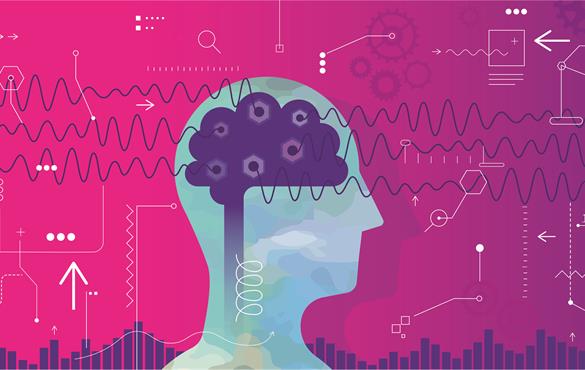Where’s my car? WashU researchers to study short-term working memory
ShiNung Ching and Larry Snyder at the School of Medicine plan to study how the brain allocates resources for working memory with funding from the NIH's BRAIN Initiative

When we drive to a place and park the car, most of us walk away without giving any thought about how to find the car when we want to leave. A team of researchers at Washington University in St. Louis plans to study how and where the brain stores this type of information so that it can be retrieved when needed.
ShiNung Ching, associate professor of electrical & systems engineering in the McKelvey School of Engineering, and Lawrence Snyder, MD, PhD, professor of neuroscience at the School of Medicine, will study short-term working memory in the brain — part of a broader effort to understand the link between the dynamics and function of neural circuits — with a three-year, $1.1 million grant from the National Institutes of Health (NIH)'s National Institute of Biomedical Imaging and Bioengineering and the National Institute of Mental Health. The grant is part of the NIH's Brain Research through Advancing Innovative Neurotechnologies (BRAIN) Initiative aimed at revolutionizing the understanding of the human brain.
"Our goal is to take mathematical and computational theories about how resources are optimally allocated in different engineered settings, then use these ideas as a framework to think about how the brain might be allocating its resources to achieve working memory," Ching said.
Working memory is critical for normal human reasoning, and problems with it stem from normal aging as well as neuropsychiatric illnesses. A clearer understanding of how it works could lead to improvements in diagnosing and treating these illnesses.
When we do a task that requires working memory, such as parking a car or remembering a phone number, we are receiving and storing information from the periphery. We can't always anticipate when we are going to be faced with something new that we need to remember, so there is a problem of allocating resources between current and future memory needs that the brain has to solve, Ching said.
"Let's say we are observing an area of the brain that we thought was important for working memory," Ching said. "If I looked at it one minute after you parked your car, I might see some activity that suggests that it is storing the memory of your car's location. If I looked four hours later, I might see a weaker signal there. Eight hours later I may see no signal there, or something totally different, but you might nonetheless still figure out where your car is. How does the brain manage the use of those circuits? We'd like to understand how this type of prioritization is accomplished in the brain."
Ching said optimal resource allocation is also used in many engineered systems, such as power grids or smart grids, which have to determine how to distribute finite resources across a network.
"This work will take the mathematical engineering theory that we use to study those problems and see if we can use it to predict what we observe in the brain," he said.
With this information, Ching will develop models of neuronal activity in the brain, then Snyder will then examine whether the activity precited by the model is present in actual brain activity.
"We've observed that when memories first become engaged, certain neurons will become active, seemingly representing the memory, but over time, that activity will drop away, so if you look 5 or 10 seconds later, the cells appear to be doing nothing," Ching said. "Despite this, the ability to recall the memory persists. Which begs the question, why were those neurons turned 'off' and where, ultimately, in the circuit does the memory reside?"




